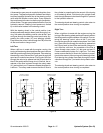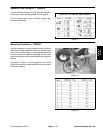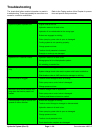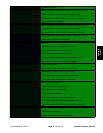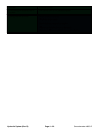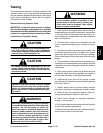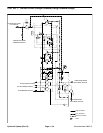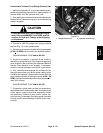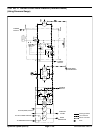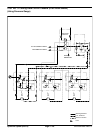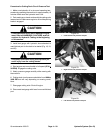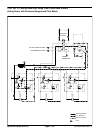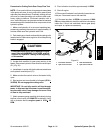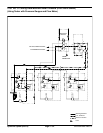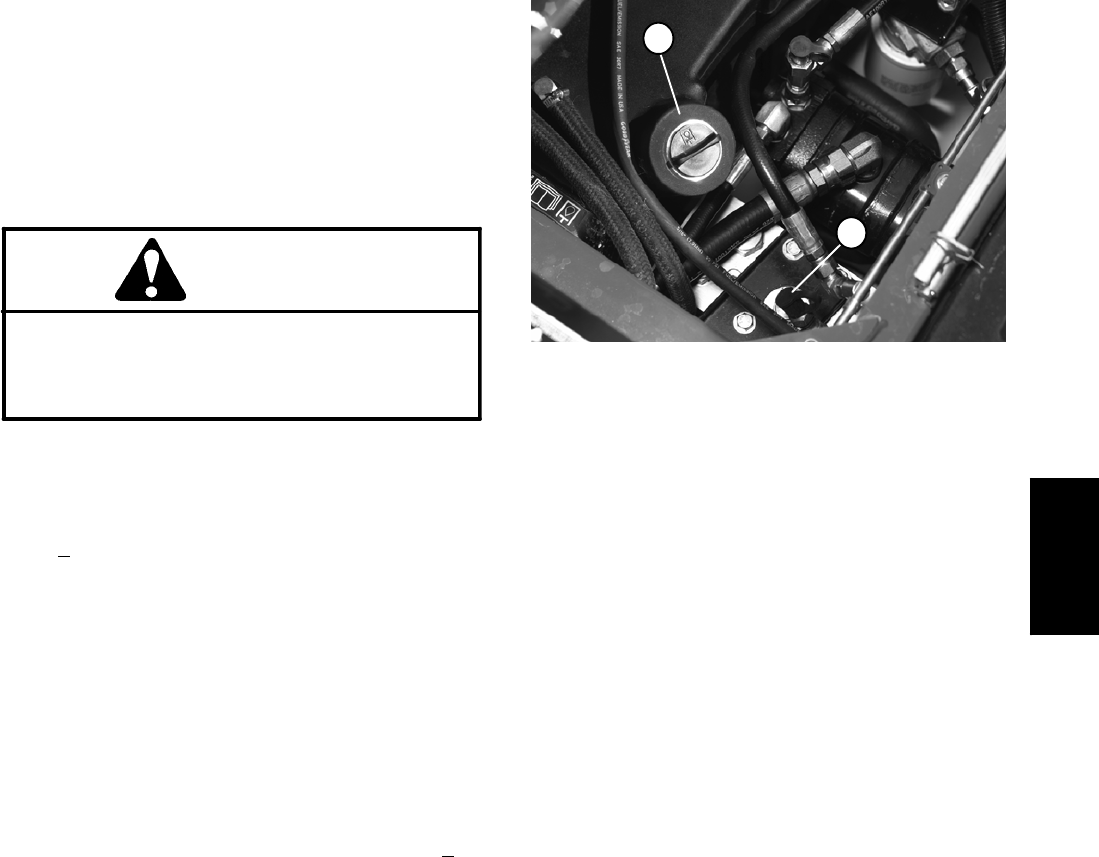
Groundsmaster 4000--D Hydraulic System (Rev. B)Page 4 -- 25
Procedure for Traction Circuit Charge Pressure Test
1. Make sure hydraulic oil is at normal operating tem-
perature by operating the machine for approximately 10
minutes. Make sure the hydraulic tank is full.
2. Park machine on alevel surface withthe cutting units
lowered and off. Make sure engine is off and the parking
brake is engaged.
CAUTION
Prevent personal injury and/or damage to equip-
ment. Read all WARNINGS, CAUTIONS, and Pre-
cautions for Hydraulic Testing at the beginning
of this section.
3. Connect a 1000 PSI gauge onto charge pressure
test port (Fig. 14) under operator seat.
4. Start the engine and put throttle at full engine speed
(2730 +
30 RPM) with no load on the hydraulic system.
GAUGEREADINGTOBE200 to 300 PSI.
5. If there is no pressure, or pressure is low, check for
restriction in pump intake line.Also, inspect charge relief
valve located in filter manifold (see Hydraulic Manifold
Service: Filter Manifold in this chapter). If necessary,
check for internal damage or worn parts in gear pump.
6. Also, with the pressure gauge still connected to the
charge pressure test port, take a gauge reading while
operating the machine in forward and reverse. Start the
engine and put throttle at full engine speed (2730 +
30
RPM). Apply the brakes and push the traction pedal for-
ward, then reverse.
GAUGEREADINGTOBE200 to 300 PSI.
7. If pressure is good under no load, but drops below
specification when under traction load, the piston pump
and/or traction motor(s) should be suspected of wear
and inefficiency. When the pump and/or traction mo-
tor(s) are worn or damaged, the charge pump is not able
to keep up with internal leakage in traction circuit com-
ponents.
1. Charge pressure port 2. Hydraulic reservoir cap
Figure 14
2
1
Hydraulic
System



